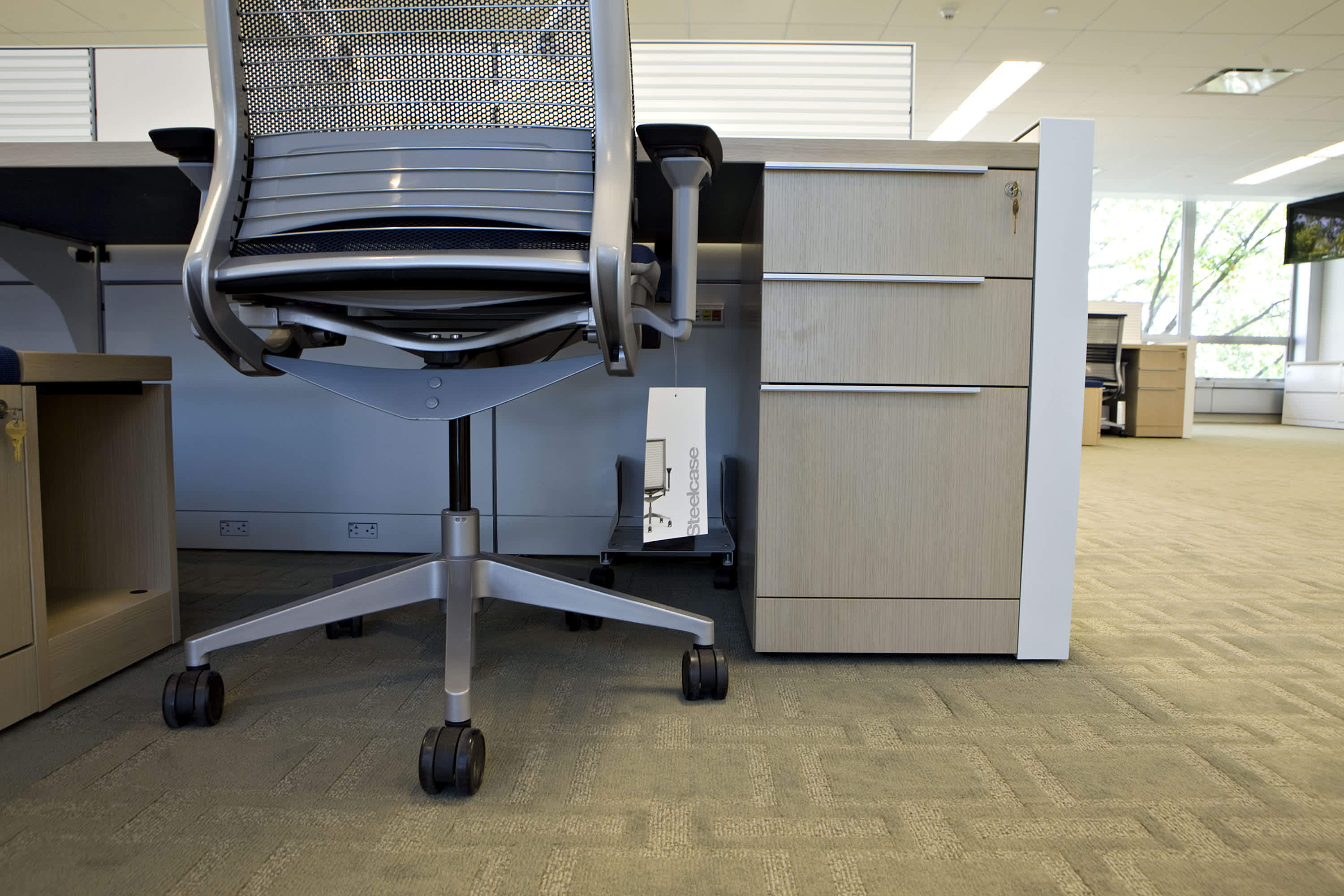A tag hangs from a Steelcase London Ltd. desk chair in the former offices of Duff Capital Advisors LP in Greenwich, Connecticut.
Daniel Acker | Bloomberg | Getty Images
With nearly half of the S&P 500 declining to provide earnings guidance, simple verbal commentary from a CEO or CFO —whether in a quarterly earnings press release, a conference call, or an annual meeting — is becoming increasingly important as traders grapple with understanding the investment environment.
This earnings season, I’ll be paying particular attention to that verbal commentary. Below, a selection of recent comments I found particularly insightful.
The future of work — and furniture
What does a furniture company think about the future of work? Steelcase CEO James P. Keane had some interesting thoughts at his annual meeting:
“In the very short run, offices need more separation between desks, and, in some cases, screens or partitions in order to comply with science-based guidelines, for example, the 6-foot rule. Our own analysis reveals that about 70% of desks in the United States may not be in compliance with that standard. And they’re often sitting on very expensive real estate. So there’s an opportunity to help retrofit and reconfigure these spaces so they don’t sit idle. In the longer run, we believe infection control will remain a concern, and we’re working with experts to understand and apply the science as we design the next generation of office furniture.”
Bank lending: It’s tough out there
If you’re interested in what is going on with retail and commercial businesses, regional banks usually offer the best insight. US Bancorp CEO Andrew Cecere offered a mixed picture of the state of commercial lending:
“There are some mixed signals. And I think the mixed signals is the sort of the competing factors of the stress in the economy from the shutdown, offset by the stimulus that’s occurring across many categories, unemployment benefits, the stimulus checks, PPP, all those things. And those are competing forces, which makes modeling and projecting very difficult in this environment. I would say small businesses are struggling the most, for a lot of different reasons, principally because they have less cushion than the larger companies…So while certain industries continue to be stressed, you’re seeing other industries that are actually doing a little bit better in this environment. So small, challenged; middle and large, mixed. Some doing well and some not so much.”
Trading is great — M&A … not so much
Finally, Goldman Sachs reported strong numbers on robust trading activity, but CEO David Solomon also noted the serious detrimental effect the COVID-19 outbreak has had on mergers and acquisitions:
“The #1 thing that drives M&A activity is CEO confidence….announced M&A transactions in the second quarter were down 75%. … We have seen over the course of the last 6 weeks or so, as economies around the world have started to reopen, a reengagement by clients and CEOs in their forward strategic view. … And as people have more confidence, they’ll be able to move forward. You did see 1 or 2 significant M&A transactions during the course of the last week. I want to be clear, it’s not shut down, but I think you need a more certain environment with better insight into the health care situation and the economic situation to see that replenishment normalize. My guess is we’ll get that, but it will take a couple of quarters for sure.”
